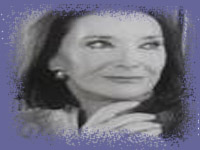THE MEDIEVAL THEATRE
The Spanish theatre, like the European theatre, is linked to the religious cult. The mass, main liturgical celebration in the Christian religion, is in itself a “drama”, a representation of the death and resurrection of Christ. The clergymen, in their didactic eagerness to explain the mysteries of the faith to the mainly illiterate faithful, will be the first to create theatre dialogues, with which they make a stage version of some important episodes of the Bible. These representations, which took place within the churches (in the choir or central part of the nave) became more spectacular and longer little by little. Due to decency prejudices, when some funny and profane elements were added to this type of representations, they began to be represented no longer inside the church but outdoors, in the porches and vestibules of the churches or in squares, streets and cemeteries. In Spain, few written documents and theatre plays from these centuries are preserved. The oldest play of Castilian theatre is El Auto de los Reyes Magos (an allegory of the Epiphany) from the end of the XII century, written in romance language and probably of Frankish origin. But it can be said that until the XV century this kind of theatre was not written like a genre itself, except for the popular minstrel games. Among the best authors of this time we find Juan del Encina, Lucas Fernández and Jorge Manrique.

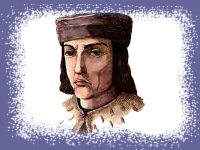
THE XVI CENTURY
The medieval parameters will continue to be the key of the Spanish theatre until a process of modernization starts in the XVI century, which will result in the creation of a new genre: the new XVII century comedy. The XVI century is, therefore, a moment of searching and coexistence of several tendencies: the religious drama (with authors like Gil Vicente); the classicism (with Juan de la Cueva); the Italianists (with Juan del Encina and Bartolomé Torres Naharro) and the nationalistic tradition (with Juan de la Cueva). The most important play of the period is La Celestina by Fernando de Rojas. In fact, it is a humanist comedy, written to be read and not performed. It is an exceptional work, a magnificent picture of the time and a model of later literature. It is, nevertheless, a work of such a complicated dramatic structure (around 20 acts) that it could not be represented at its time and that continues to have great difficulties for its staging.
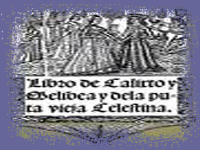
THE GOLDEN AGE
The XVII century is called the Golden Age for the theatre in Spain. It is an exceptional moment due to the social and political circumstances. The public representation becomes the axis of the morality and the aesthetics. The external appearance becomes fundamental. The world is a great theatre and theatre is the most suitable art to represent life. The first theatres (called “corralas”) are created. They were managed by “hermandades” (kind of guilds) true precedents of the modern theatre business companies.
Corrala
Authors, works and companies are going to proliferate. Theatre is no longer a restricted event but a competitive product, subject to the laws of supply and demand. An interesting theoretical debate accompanies the birth and development of this new type of theatre. Two authors of the time serve us to illustrate the sense and the evolution of this debate and the theatre art: Cervantes and Lope de Vega. Cervantes, the great Spanish novelist, did not achieve the success that he thought to deserve in the theatre and this was probably due to the characteristics of his plays, which did not correspond with the tastes of the public. It is, in fact, a theatre that wants to be a mirror of the human life, in which the text has great importance and where the characters are not mere stereotypes. In time, his plays have been given the credit they deserve, especially the “entremeses” (short farces). On the contrary, Lope de Vega knows exactly how to amuse the baroque audience, who just want to entertain themselves and to have a good time, rather than to attend a cultural event. They enjoyed especially that the representations were complete shows: with music, dances and, mainly, many scenic effects (appearances and disappearances, change of scenes, falls and flights, among others) Lope knew like nobody else how to use these effects. His works imposed the central characteristics of the new comedy: polimetric verse, breaking of the units of time and place, mixture of comic and tragic elements and structure in 3 acts. All these characteristics have an aim: to keep the audience interested in the plot until the end of the play. Most of the comedies dealt with subjects of honour, since honour (as public fame and appearance after all) was one of the great concerns of the baroque people. The great playwrights of the time, in addition to Lope de Vega (who wrote around 1500 plays) are, among others, Tirso de Molina, Juan Ruiz de Alarcón, Francisco Rojas Zorilla and Agustín Moreto. Another remarkable writer of the time was Pedro Calderón de la Barca, author of some of the fundamental dramas in the history of the Spanish theatre, such as La Vida es Sueño and El Alcalde de Zalamea, and creator of the sacramental allegory that, with the new comedy, forms the core of the Spanish baroque theatre.


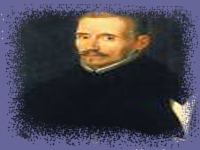
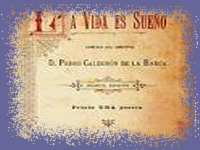
THE ENLIGHTTENMENT
The XVIII century was important in Spain because, for the first time, the State supervises the theatrical orientation of the country. Under the influence of the illustrated ideas, a movement of reform of the theatres of Madrid was created, led by Leandro Fernández de Moratín. The main purpose of this movement was to recommend some plays and to prohibit others, under the premise to promote exclusively those plays which protected the truth and virtue, supporting the representations that involved moral education or cultural indoctrination. Among the prohibited works there were some plays from the Golden Age (XVI century), but they censured mainly those contemporary authors who insisted on the formula of the previous century. It is necessary to say that, in spite of the censorship exerted, the main objective of the reform was to modernize the theatre. The state of the Spanish comedy was deplorable, as Moratín tried to remark in La comedia nueva o el café (1792), a hard attack against the excess of the post baroque style. Among the proposals of the reform were: the obligation to distribute the roles according to the interpreters’ abilities and the appraisal of the director’s and poet’s role. Nevertheless and in spite of the efforts of the illustrated reformers, in the XVIII century the so-called theatre comedies and the magic comedies prevailed. In both, the scene machinery resources had the main role. There were enchantments, elves, devils, dwarves who became giants, etc. The location of the play became more and more exotic. No matter how hard the genre was object of the irony and the scorn of the neoclassic authors (who hated all the exaggerations of a badly assimilated post baroque style) the audience supported this type of comedies enthusiastically.

THE ROMANTIC MOVEMENT
The Spanish romanticism is an impetuous movement, with hardly fifteen years of presence in the theatre. Undoubtedly, the War of Independence and later absolutism of Fernando VII delayed the appearance of a movement that, as it is widely known, had revolutionary ideas. However, it can be said that the romantic Spaniards agree, in their great guidelines, with the Germans and Frenchmen: an eagerness for transgression, which explains the frequent mixtures of tragedy and comedy, verse and prose, so condemned by the neoclassic authors; rejection of the 3 units; special attention to love subjects, an impossible and platonic love set in historical and legendary places and countless references to the abuses and injustices of the people in power; mysterious, mythical heroes, always faithful to their beloved or to heroic reasons. In this sense, the romantic hero par excellence is the main character in Don Juan Tenorio by José Zorrilla.
In his romantic version of the myth, Zorrilla gives an unusual level of stage drama to the legend and, above all, he shows a character able to redeem himself through love to change his condition of a womanizer, obtaining therefore the divine pardon that, two centuries before, Tirso de Molina had denied. Regarding the forms of representation, it is important to emphasize that in this period the actors, influenced by the ideas of Mariano José de Larra (who wrote many articles about the problems that threatened the theatre) consider for the first time the necessity to renew the performing techniques.” It is essential – points Larra- that the actor has almost the same talent and inspiration as the poet, that is to say, that he is also an artist”. The inauguration, in 1830, of the Royal Conservatory of Music, was the first step towards the consolidation of the interpretation studies.
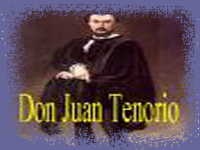

THE XX CENTURY
The renovation of the dramatic art that happens in other countries at the end of the XIX century and beginnings of the XX (thanks to the work of directors and authors such as Stanislavsky, Gordon Craig, Appia, Chéjov or Pirandello) does not take place in Spain. Here, the theatre is mainly an entertainment for the bourgeois audience, who goes regularly to the representations. The theatre companies formed by the great actresses and actors of the time (who are also their own managers) are dedicated to please the tastes of this conservative and conventional public. Two exceptional cases: Gabriel Martínez and Margarita Xirgu’s company, who decided to put their money and prestige at risk looking for new authors and aesthetic innovations. Adriá Gual, creator of the Teatre Intim, made also an exceptional contribution by showing plays of European style. The usual thing was the success of those authors who, like José Echegaray (Nobel Prize of Literature in 1904) pleased the expectations of the bourgeois audience. Benito Pérez Galdós, another well-known author, is a different case. Galdós dared to create female characters who, like the protagonist of his drama Electra (1901) face the fanaticism and obscurantism.
Jacinto Benavente’s works show the end of the melodramatic, grandiloquent and declamatory tone in the theatre. Benavente pioneers the modern realism with his plays Los intereses creados (1907) or La Malquerida (1913). The other tendency of the Spanish theatre at the beginning of the century is the popular theatre, a social drama about local customs and manners that finally derives in an original stylistic form: the sainete. His greatest representative will be Arniches (1866-1943) creator of the grotesque tragedy, a caricature of the middle class (although the kind of criticism that this theatre proposed was always mitigated by commercial interests).
Valle Inclán is, however, an author free from any commercial imposition in the creation of his works. This characteristic gave him a creative freedom that places his works among the best of the time. Valle’s theatre is an innovating, critical, deeply original theatre. His new scenic approaches received the name of “Esperpentos”: they display an aesthetic and systematic deformation of reality on stage. For Valle, like for Shakespeare, theatre is a mirror of reality, but in this case a distorting mirror.
Valle Inclán’s plays did not receive at the time the consideration that he deserved, as neither received the rest of the authors of the 1898 generation (Miguel de Unamuno, Pío Baroja, Azorín…) except for Antonio and Manuel Machado, who achieved a great success of public with dramas such as La Lola se va a los Puertos (1929) or La Duquesa de Benamejí (1932) Soon the authors with non-commercial ideas looked for other ways to perform their works outside the great theatres: El Búho of Max Aub and La Barraca of Eduardo Ugarte and Federico García Lorca. The latter, one of the greatest poets of the century, was one of the few members of the 1927 generation that was interested in theatre. Lorca used in his works a great diversity of inspiration sources: local customs in Bodas de Sangre (1933) or Mariana Pineda (1927); puppet theatre in a Valle Inclán fashion in Títeres de cachiporra, Amor de Don Perlimplín con Belisa en su jardín (1933) La Zapatera Prodigiosa(1930) and the avant-garde movements, like surrealism in El Público (1930) or Así que pasen cinco años (1930) The collaboration between García Lorca and Margarita Xirgu contributed to the performance of this dramatist-poet’s plays in the most important Spanish theatres.
Among the performances that this actress and businesswoman set up, it is possible to emphasize the première in Barcelona of Mariana Pineda, with a scenery by Salvador Dalí. The outbreak of the Spanish Civil War in 1936 and the murder of Lorca put an end to the career of an author who combined an extraordinary and avant-garde talent with the ability to please the traditional theatregoers.
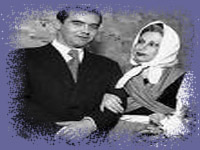
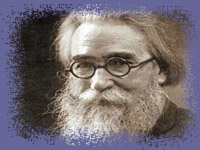
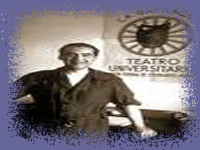
THE SPANISH THEATRE DURING FRANCO’S DICTATORSHIP
After the Spanish civil war (1936-39) the dramatists of the post-war period faced a hard censorship that made it difficult, even impossible, to offer a critical vision of reality. Two figures emerge in this closed society unmasking, although from different perspectives, the reality (about which nobody wanted to speak publicly): Antonio Buero Vallejo and Alfonso Sastre.
Buero’s plays deal with the tragic and ambiguous condition of human freedom, whereas Sastre’s works, inseparable from his communist ideas, understand the theatre art as an instrument of revolutionary action. By the end of the 1950’s a new generation of authors arises, the so-called “Lost Generation”: Lauro Olmo, Martin Recuerda and Luis Matilla soon acquire a group conscience, due to their systematic marginalization of the commercial and public scenes. They also agree about their topics and approaches: following the line of critical realism, they talk about the exploitation of man by man and social injustice. Throughout the 1960’s, a new group of authors appears, so punished by the censorship as the previous ones. They characterized themselves, in general terms, by their rejection of realism and their experimental interest. This theatre style is influenced by the new forms of avant-garde theatre, from the Theatre of the Absurd to Artaud, Brecht or Grotowsky. Among the authors we find José Ruibal, Francisco Nieva or Fernando Arrabal. The latter is the author of some of the most representative pieces of the European theatre of this century. It is also in the 1960’s and the 1970’s when some independent groups (linked to an experienced director or author) appear with formulas of collective creation. These groups arise with a determined vocation of anti Franco resistance and a searching attitude concerning the scenic conceptions and interpretative techniques. Removed from the circles of the official theatre, their work worm its way into universities and cultural centres. Groups like Tábano, TEI (Teatro Estable Independiente), Goliardos, Cómicos de la Legua, Esperpento and many others contributed to put new energy to the Spanish theatre life in the last years of Franco’s dictatorship.

THE SPANISH SCENE NOWADAYS
With the return of democracy, a renovation of the official theatre took place. Directors, men and women vetoed until then, such as Miguel Narros, Nuria Espert or Paschal Lluís, are promoted to the direction of the national theatres, focusing their programmes on the great classic and contemporary dramatists and recovering the Spanish authors of the 1898 generation and beginning of the XX century, like Valle-Inclán or Lorca. The emphasis put on this revitalization of classic texts has been associated to a crisis of original dramatic text production.
Nevertheless, the independent groups lose vitality and presence in the Spanish scene. Only a few of them subsist and keep a continuity: Els Joglars, directed by Albert Boadella, whose always controversial and shocking montages count on the audience’s unconditional support; Els Comediants, that vindicates a festive theatre of great masks and bigheaded giants, a theatre for open spaces that connects with folklore and popular celebrations; or La Fura dels Baus, a group described by themselves as “a criminal organization within the present panorama of the art”.
In their montages all the assumptions of the theatre representation are subverted, beginning with the space for the audience, constantly taken up by the action. In accordance with the international tendencies, these groups have a vision of the theatre as a thorough show, not exclusively textual, including in their montages other forms of artistic expression, such as photography, video, painting or architecture.
